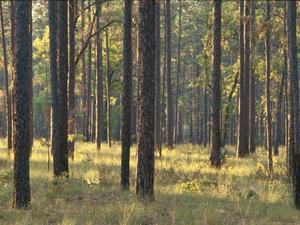Helping You Manage Your Natural Resource Responsibly
Call True North
Mobile: 919-815-3468
Pine Managment
Pine Management
The economic potential of growing pine is very attractive and has resulted in the conversion and planting of significant acreage of farmland and cutovers in North Carolina and across the Southeast. But aggressive management is necessary to maximize the timber value and wildlife benefits of pine stands.
Successful Establishment
The first essential step in pine management is successful establishment. Planted pines and natural pines often spend their first three or four years competing heavily with hardwood and weed competition to become established and survive. Proper site preparation following harvest and a selective herbicide program that controls hardwood and weed growth will insure that your investment is protected and that you will maximize your potential returns with a fully stocked stand.
Pre-commercial Thinning
Not only do pine compete with hardwoods and weed species for survival they compete with themselves. Natural pine stands and planted pine stands that have natural pine regeneration can be extremely overstocked. I have measured as many as 30,000 pine seedlings on an acre one year following a harvest. It is important to correct this overstocked condition early on in a pine stands development. Precommercial thinning will prevent the development of dense, small diameter, poor yield stands.
Commercial Thinning
An active thinning program is essential to maintain growth rate for pine. Thinning will remove poor quality trees and reduce the stress on the remaining trees, which will help to maintain a healthy condition and make it less susceptible to bark beetle attack. Pine stands quickly develop a closed canopy and smother low growing plants with a dense layer of litter and shade that will preclude the development of ground cover and plant diversity essential for providing food and cover resources for wildlife.
A thinning can change that by increasing the amount of sunlight that reaches the forest floor, thus stimulating the growth of vegetation used by wildlife for food and cover. Thinnings will also provide you some moderate income from the property to offset management expenses. By taking out the trees that are less desirable due to slow growth, poor form or defect and/or pacing, a thinning will help to eliminate the overcrowding and competition that will exist for sunlight among the pine trees. This practice will give more space, water, and nutrients to the desired leave trees to increase crown and diameter growth.
Most pine stands can be thinned at least twice between age 15 years and 30 years. Once the thinnings are complete a landowner can plan to grow the stand for more than 40 years to maximize tree diameter and height to provide the landowner with a high-quality stand of sawtimber.
True North Forest Management Services can help you with the proper management of your pines. True North can provide the following pine management services
- Reforestation Planning, Contracting and Administration
- Regeneration and Survival Inspections
- Herbicide Weed and Hardwood Control in Pine Plantations
- Precommercial Thinning Coordination
- Commercial Thinning (Marking, Contracting, and Monitoring)
- Forest Fertilization
- Understory Burning
- Timber Sale Preparation, Marketing and Administration
"As long as it is not only wood, but size and quality that is wanted, the factor of time is an important one, for it takes time to produce both size and quality." B.E. Fernow.
True North Forest Management Services
Helping You Manage Your Natural Resource Responsibly

